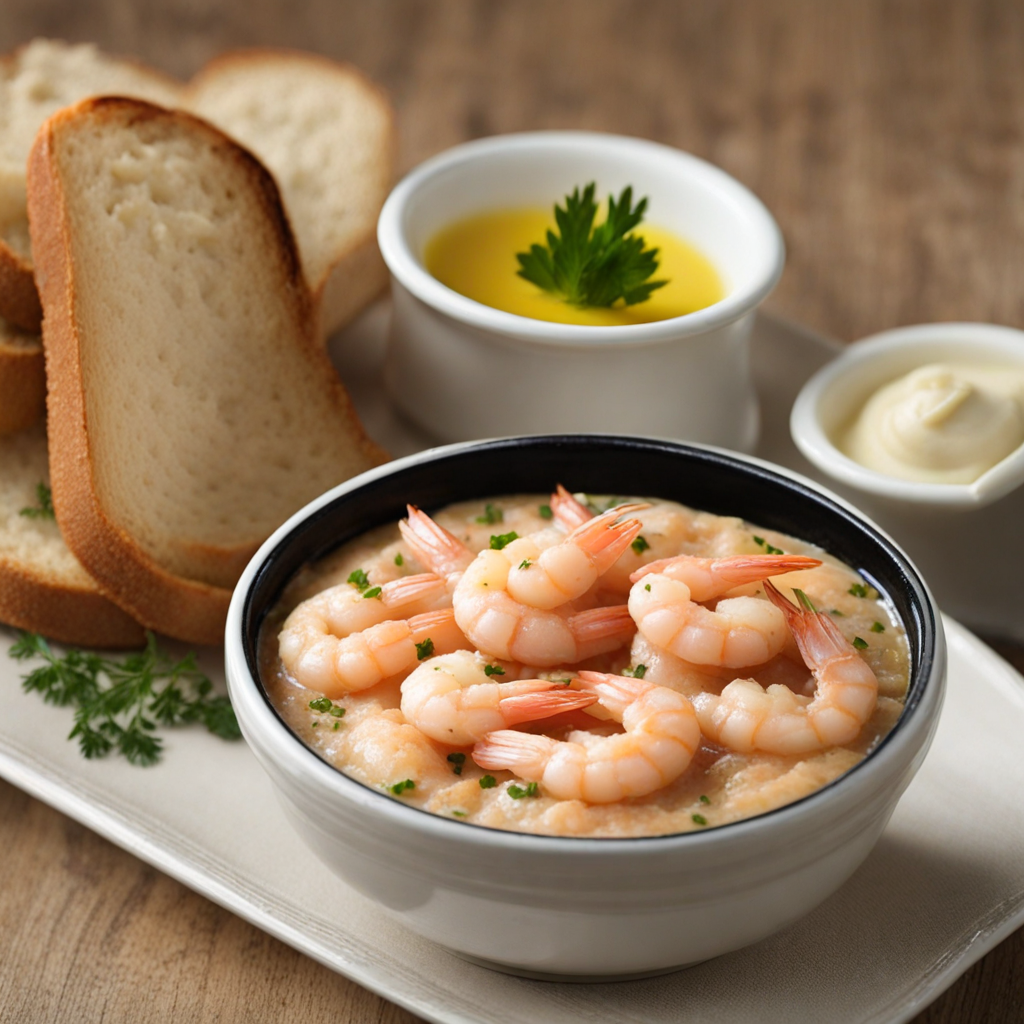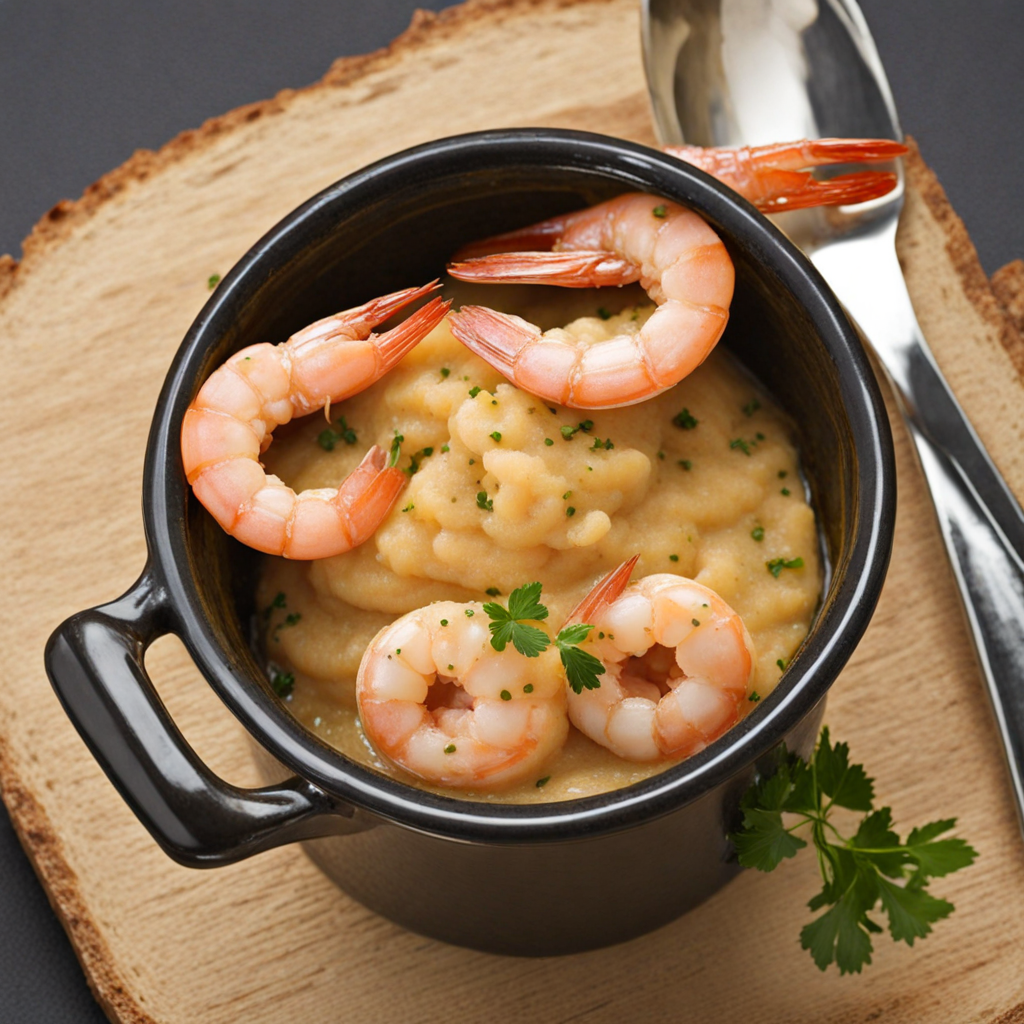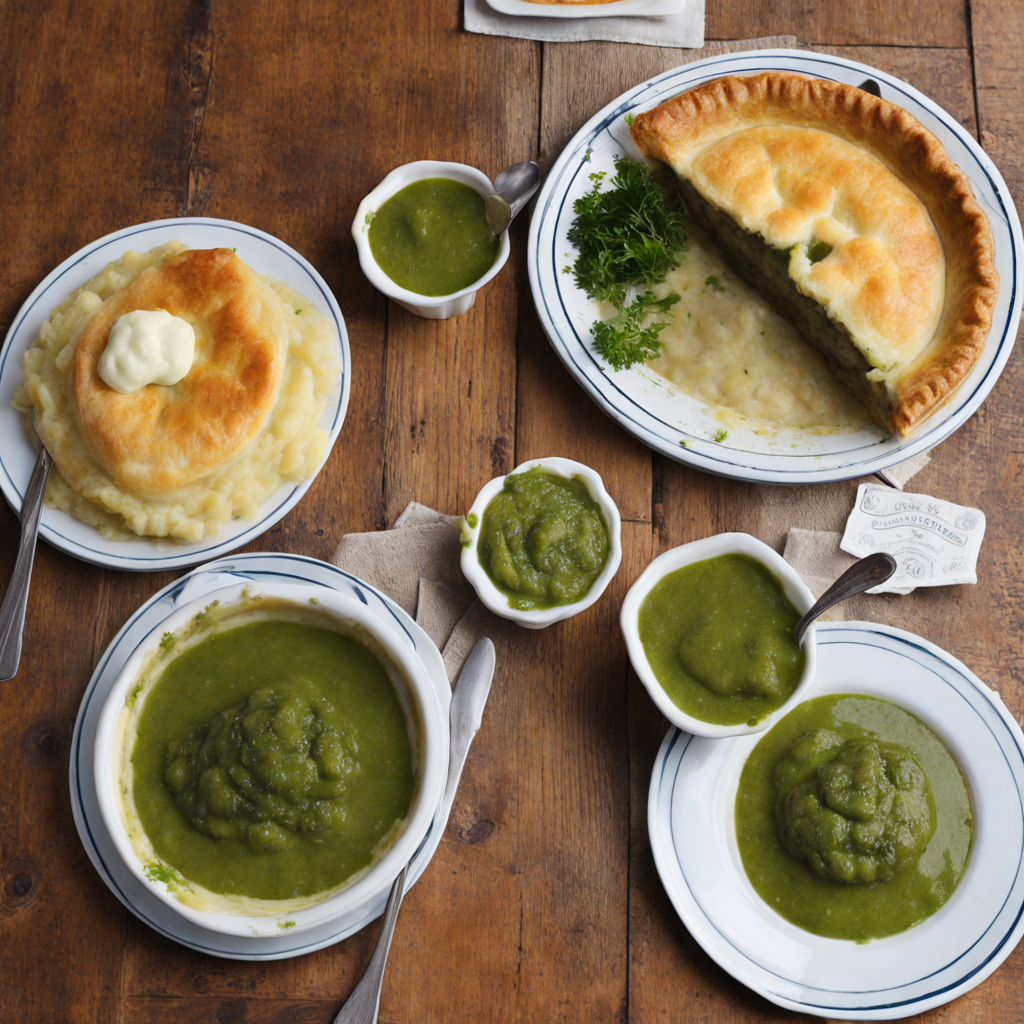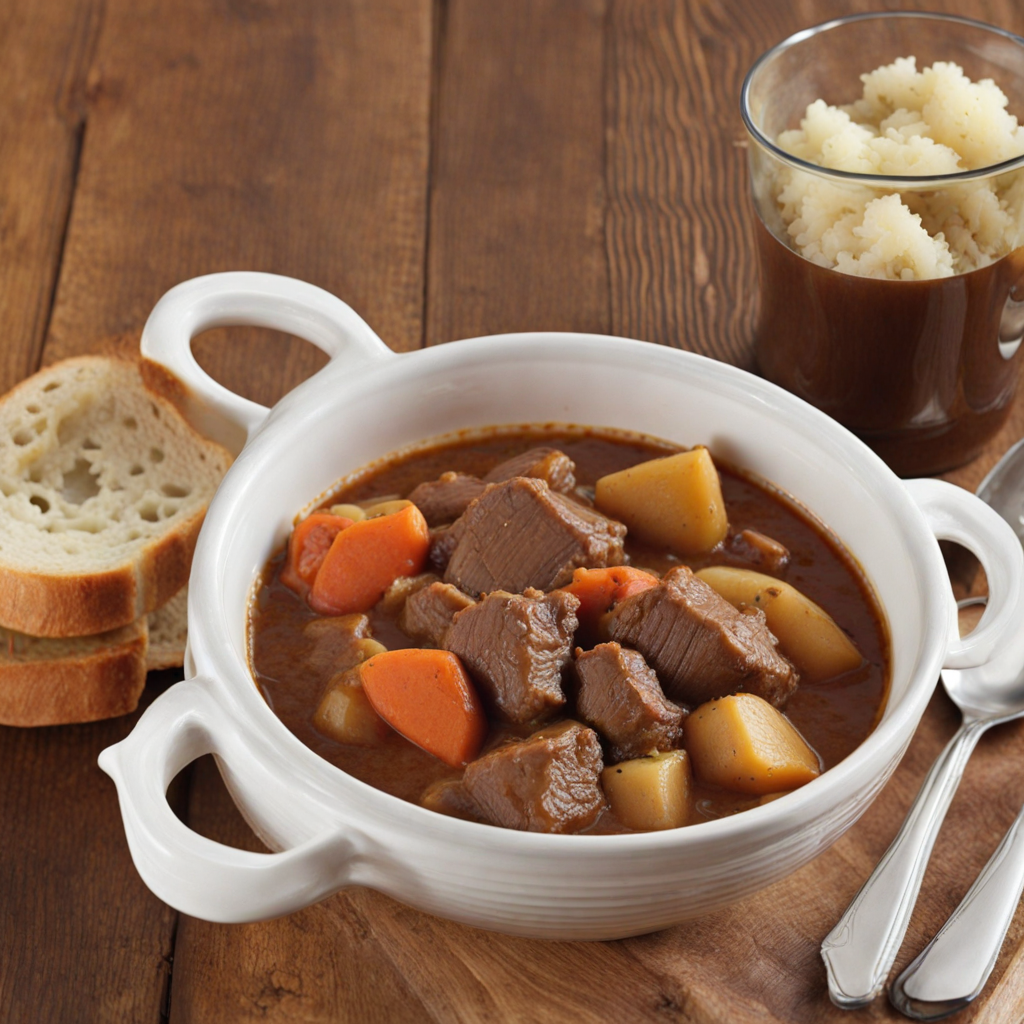Potted Shrimps
Potted Shrimps is a traditional British delicacy that hails from the coastal regions of the United Kingdom, particularly associated with the cuisine of Lancashire. This dish features small, sweet, and succulent brown shrimp, which are a prized catch in British waters. The shrimp are typically cooked and then packed into a pot, layered with a rich, spiced butter that infuses the seafood with a depth of flavor. The butter is often seasoned with a hint of nutmeg and a touch of lemon, creating a delightful contrast to the natural sweetness of the shrimp. This preparation not only preserves the shrimp but also enhances its taste, making it an indulgent treat for seafood lovers. When served, Potted Shrimps can be enjoyed warm or at room temperature, making them an excellent addition to a charcuterie board or as a sophisticated starter. Traditionally, they are accompanied by fresh crusty bread, which acts as a perfect vehicle for scooping up the rich shrimp and butter mixture. The combination of the tender shrimp and the creamy, spiced butter creates a luxurious mouthfeel that is both comforting and elegant. As you take a bite, you’ll experience a burst of flavors that are quintessentially British, evoking the essence of the sea and the rustic charm of coastal dining. Whether you're enjoying it at a seaside pub or recreating it at home, Potted Shrimps offers a unique taste experience that reflects the culinary heritage of the UK. Its simplicity belies the complexity of flavors, making it an exquisite dish that can be savored on special occasions or as a delightful everyday indulgence. With each taste, you’ll find yourself transported to the shores of Britain, celebrating the bountiful treasures of the sea.
How It Became This Dish
The Engaging History of Potted Shrimps Potted shrimps, a quintessential British delicacy, embody the culinary heritage of the United Kingdom, particularly associated with the coastal regions of Lancashire and the southern shores. Their origins can be traced back to the 18th century, a time when the British palate was evolving, and the influence of regional food traditions began to coalesce into what we now consider modern British cuisine. #### Origins of Potted Shrimps The first documented mentions of potted shrimps appear in the late 1700s, particularly in the port towns of the Lancashire coast, including Morecambe Bay. This region was abundant in brown shrimp (Crangon crangon), a small, sweet-flavored crustacean that thrived in the shallow waters, making it an accessible and popular catch for local fishermen. The technique of "potting," which involved cooking and preserving food in a sealed container, was not unique to shrimps but was a common method used throughout the British Isles to extend the shelf life of various ingredients, particularly meats and fish. The process of potting shrimps involved boiling the shrimp in salted water, then mixing them with a generous amount of butter and spices before sealing them in pots or jars. The butter not only added flavor but also acted as a preservative, creating an airtight seal that kept the shrimp fresh. This method allowed the fishermen and their families to enjoy the fruits of their labor long after the catch was made, providing sustenance during leaner months. #### Cultural Significance Potted shrimps quickly became more than just a practical means of preservation; they evolved into a delicacy associated with leisure and indulgence. By the 19th century, as the British middle class began to expand and travel became more accessible, potted shrimps found their way into fashionable dining rooms and high tea menus. They were often served as a starter or a spread, accompanied by toast or biscuits, and were especially popular among the upper classes during the Victorian era. The dish’s popularity was bolstered by its association with the seaside, evoking images of summer holidays along the English coast. Potted shrimps became a staple in coastal resorts, serving as a reminder of the bountiful marine life and the traditions of the local fishermen. They were often sold in shops and kiosks, further embedding them into the culture of seaside dining. Moreover, potted shrimps became synonymous with British culinary identity, representing the resourcefulness and creativity of local communities. This dish encapsulated the ethos of British cuisine in its ability to transform simple, locally sourced ingredients into something luxurious and refined. #### Development Over Time Throughout the 20th century, the popularity of potted shrimps saw fluctuations, influenced by changing food tastes and dietary habits. The advent of refrigeration and the globalisation of food supply chains led to the availability of a wider variety of seafood, which overshadowed local specialties. However, potted shrimps retained a nostalgic charm and continued to be celebrated as a traditional British dish. In the post-war era, as Britain faced rationing and economic challenges, the appreciation for potted shrimps re-emerged. The dish was a reminder of simpler times and the enduring connections to the sea. It became a symbol of British culinary heritage that appealed not only to older generations but also to younger food enthusiasts eager to explore and revive traditional recipes. By the late 20th and early 21st centuries, potted shrimps saw a renaissance as part of the broader movement towards artisanal and locally sourced food. Chefs and food producers began to celebrate the dish by using high-quality, sustainably sourced shrimp, often from local fisheries. This revival was in line with the growing awareness of food provenance and the desire for authentic culinary experiences. Potted shrimps began to be featured on the menus of upscale restaurants, often with modern twists that incorporated contemporary flavors and presentation styles. Today, potted shrimps are regarded as a gourmet product, with artisanal producers crafting them with great care. Many recipes now include additional ingredients such as spices, herbs, and even a hint of citrus to enhance the flavor profile. The dish is often presented in elegant glass jars, reflecting the current trend of appealing packaging and artisanal craftsmanship. #### Conclusion Potted shrimps have come a long way from their humble beginnings as a practical means of preservation for fishermen's families. They have evolved into a beloved British delicacy that encapsulates the spirit of coastal culinary traditions, while also adapting to the changing tastes and values of society over the centuries. As a dish that bridges the gap between history and modernity, potted shrimps continue to hold a special place in the hearts—and on the plates—of those who appreciate the rich tapestry of British cuisine. Whether enjoyed as a nostalgic reminder of seaside holidays or as a gourmet treat in a fine dining restaurant, potted shrimps remain a testament to the enduring legacy of British culinary heritage. As food culture continues to evolve, one can only hope that potted shrimps will maintain their status not just as a traditional dish, but as a celebration of the flavors, stories, and connections that define British coastal life.
You may like
Discover local flavors from United Kingdom







